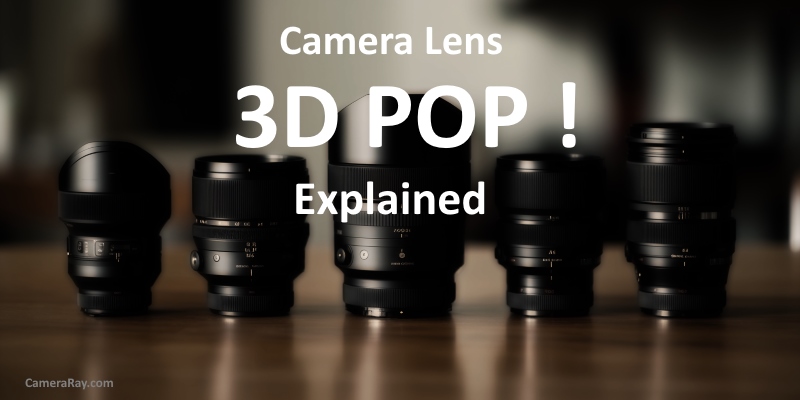
Exploring the World of Camera Lens 3D Pop: What You Need to Know.
The photography world is an ever-evolving landscape, with new techniques and technology constantly pushing the boundaries of creativity. One concept that has recently gained popularity among photographers is the “Camera Lens 3D Pop”. This effect, when executed correctly, can create stunning images that seem to jump off the page or screen. In this article, we’ll delve into the concept of 3D pop, discuss the factors that contribute to achieving this effect, and provide some tips on how to capture it in your own photography.
Defining Camera Lens 3D Pop
Camera Lens 3D Pop refers to a unique visual effect achieved in photography, wherein the subject of an image appears to have a three-dimensional quality and seems to “pop” out from the background. This effect creates a sense of depth in the image, making it appear more lifelike and engaging to the viewer. 3D pop is often the result of a combination of factors, including lens selection, aperture settings, subject-background distance, and post-processing techniques.
Factors that Contribute to 3D Pop
Lens Selection
The choice of lens can greatly impact the 3D pop effect. Prime lenses, particularly those with longer focal lengths (e.g., 85mm, 135mm), are known to produce a more pronounced 3D pop effect due to their ability to compress the depth of field and isolate the subject from the background.
Some affordable vintage and current lenses with the best 3d pop:
Contax 35-70mm f/3.4 Vario Sonnar T* MM C/Y
Sears 55mm 1.4
Voigtlander 58mm f1.4
Zeiss 50mm F/1.5 Sonnar zm
Voigtlander 40mm f2
Aperture Settings
A wide aperture (low f-number) allows for a shallow depth of field, which can help create a distinct separation between the subject and background. This separation is key to achieving the 3D pop effect. Lenses with wider maximum apertures, such as f/1.4 or f/1.8, are particularly well-suited for creating this effect.
Subject-Background Distance
The distance between the subject and background also plays a significant role in creating the 3D pop effect. By increasing the space between your subject and the background, you can accentuate the separation and make the subject appear more three-dimensional.
Lighting and Contrast
Proper lighting and contrast can also help create a sense of depth in an image. By using directional lighting to create shadows and highlights on the subject, you can emphasize its three-dimensional form. Additionally, choosing a background with contrasting colors or textures can further enhance the separation between the subject and background.
Post-Processing Techniques
While the 3D pop effect is primarily achieved in-camera, post-processing can be used to further enhance the sense of depth in an image. Techniques such as dodging and burning, selective sharpening, and contrast adjustments can all help accentuate the three-dimensional quality of the subject.
Tips for Capturing 3D Pop in Your Photography
Choose the right lens: Opt for prime lenses with longer focal lengths and wide apertures to maximize the 3D pop effect.
Utilize a wide aperture: Shoot at the widest aperture your lens allows to create a shallow depth of field and separate your subject from the background.
Increase subject-background distance: Position your subject further from the background to enhance the sense of depth in the image.
Experiment with lighting: Use directional lighting to create shadows and highlights that emphasize your subject’s three-dimensional form.
Enhance the effect in post-processing: Use techniques like dodging and burning, selective sharpening, and contrast adjustments to accentuate the 3D pop effect in your final image.
Camera Lens 3D Pop is a captivating effect that can add a sense of depth and realism to your photography. By understanding the factors that contribute to this effect and incorporating them into your shooting and editing process, you can create images that truly stand out. Remember that achieving the perfect 3D pop takes practice and experimentation, so don’t be afraid to try different techniques and settings to find the combination that works best for you. As you become more adept at capturing this effect, you’ll find that your photography takes on a new level of visual interest and appeal, drawing in viewers and setting your work apart from others. So, grab your camera, experiment with lens choices, aperture settings, lighting, and subject-background distances, and start bringing your images to life with the mesmerizing 3D pop effect.